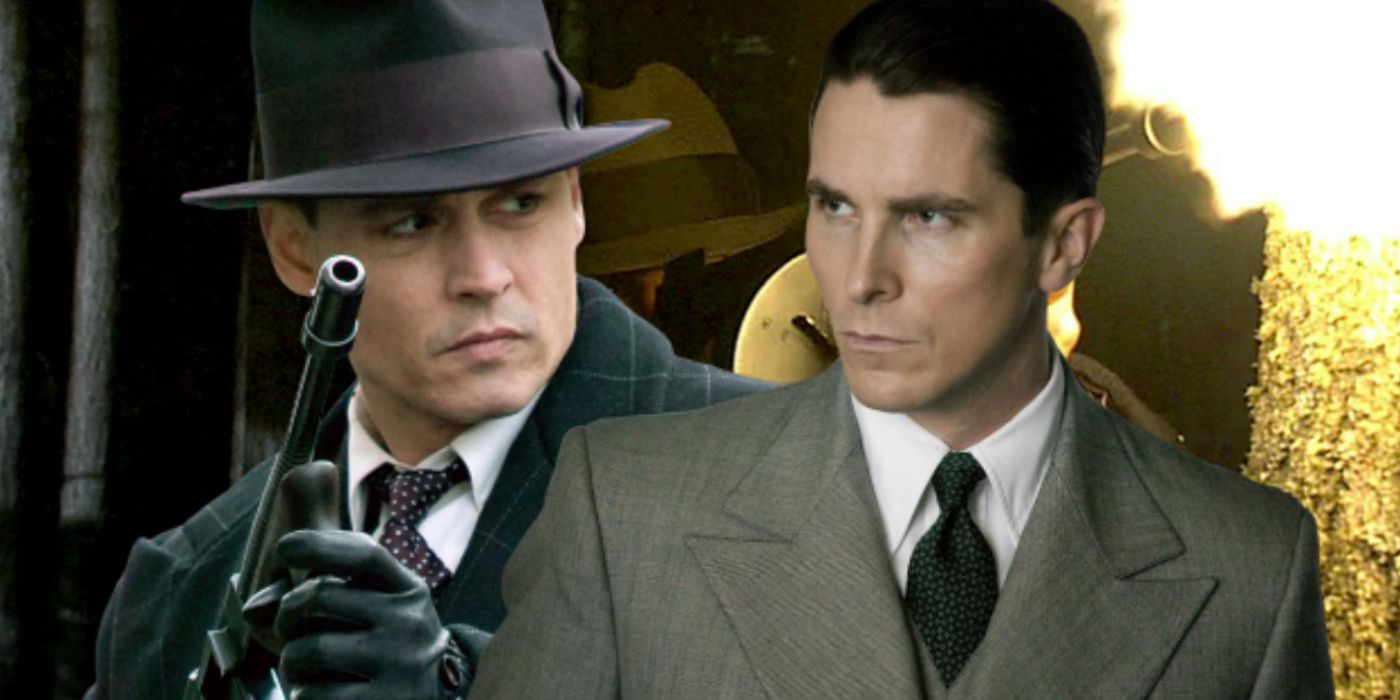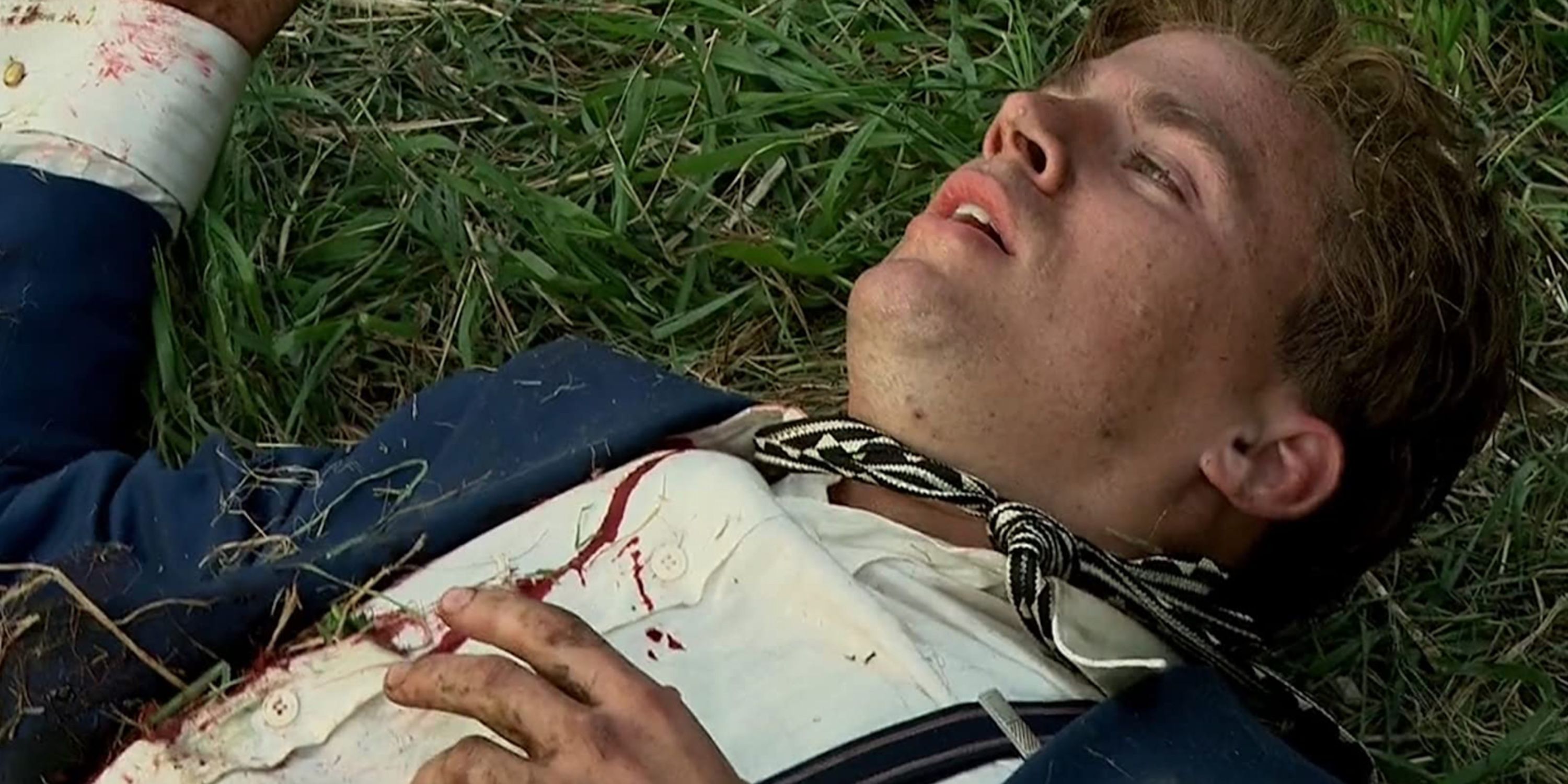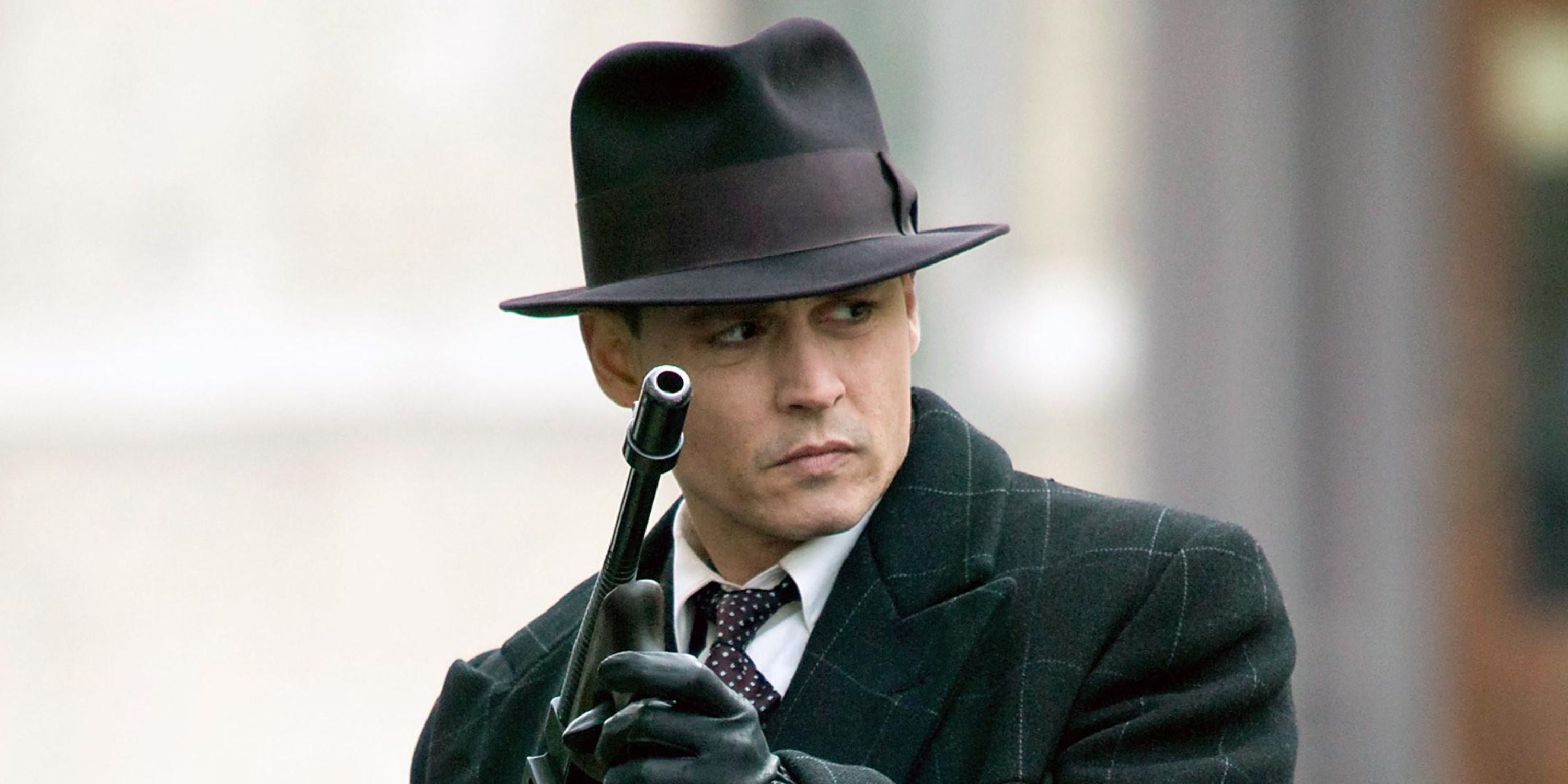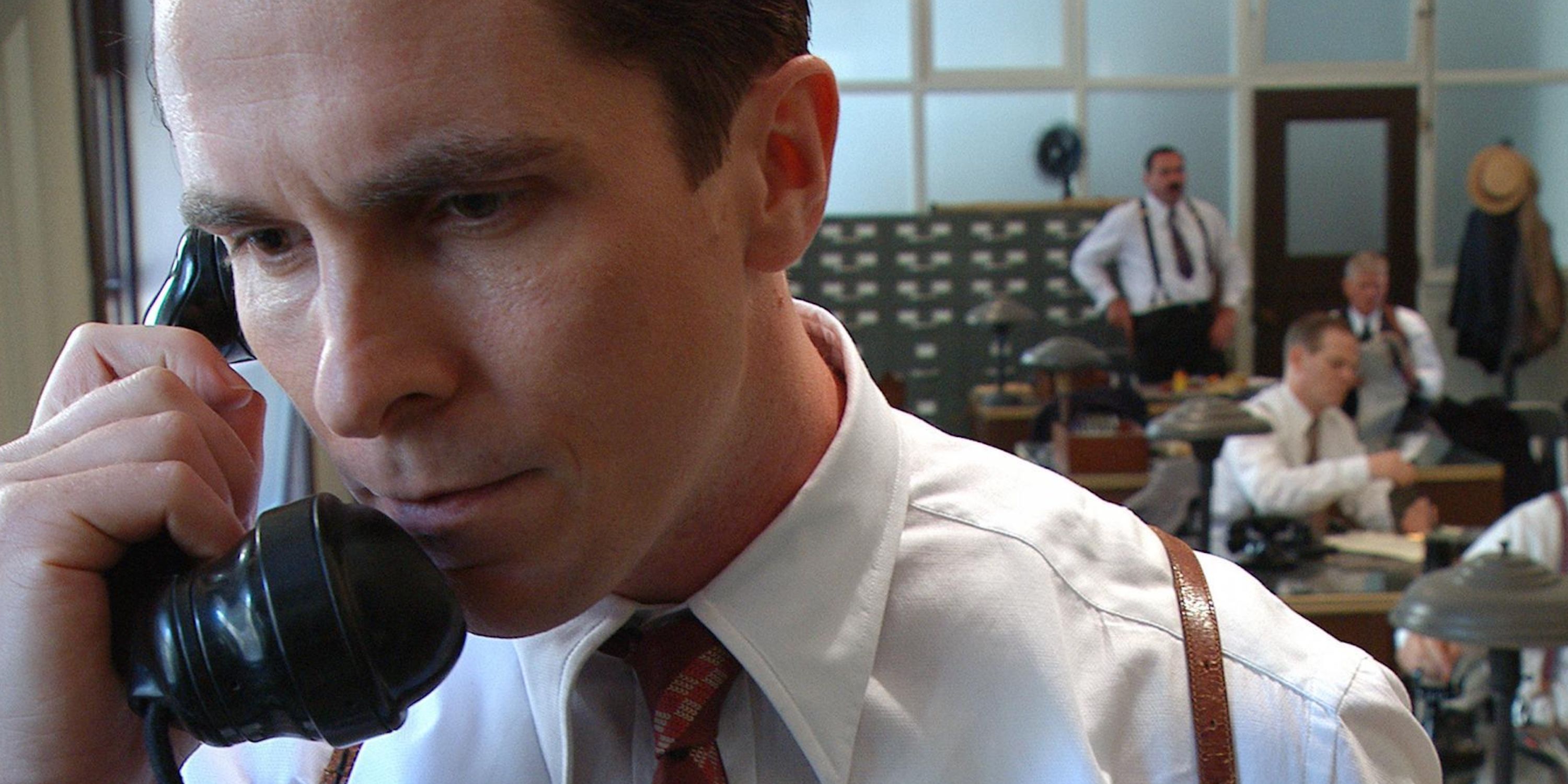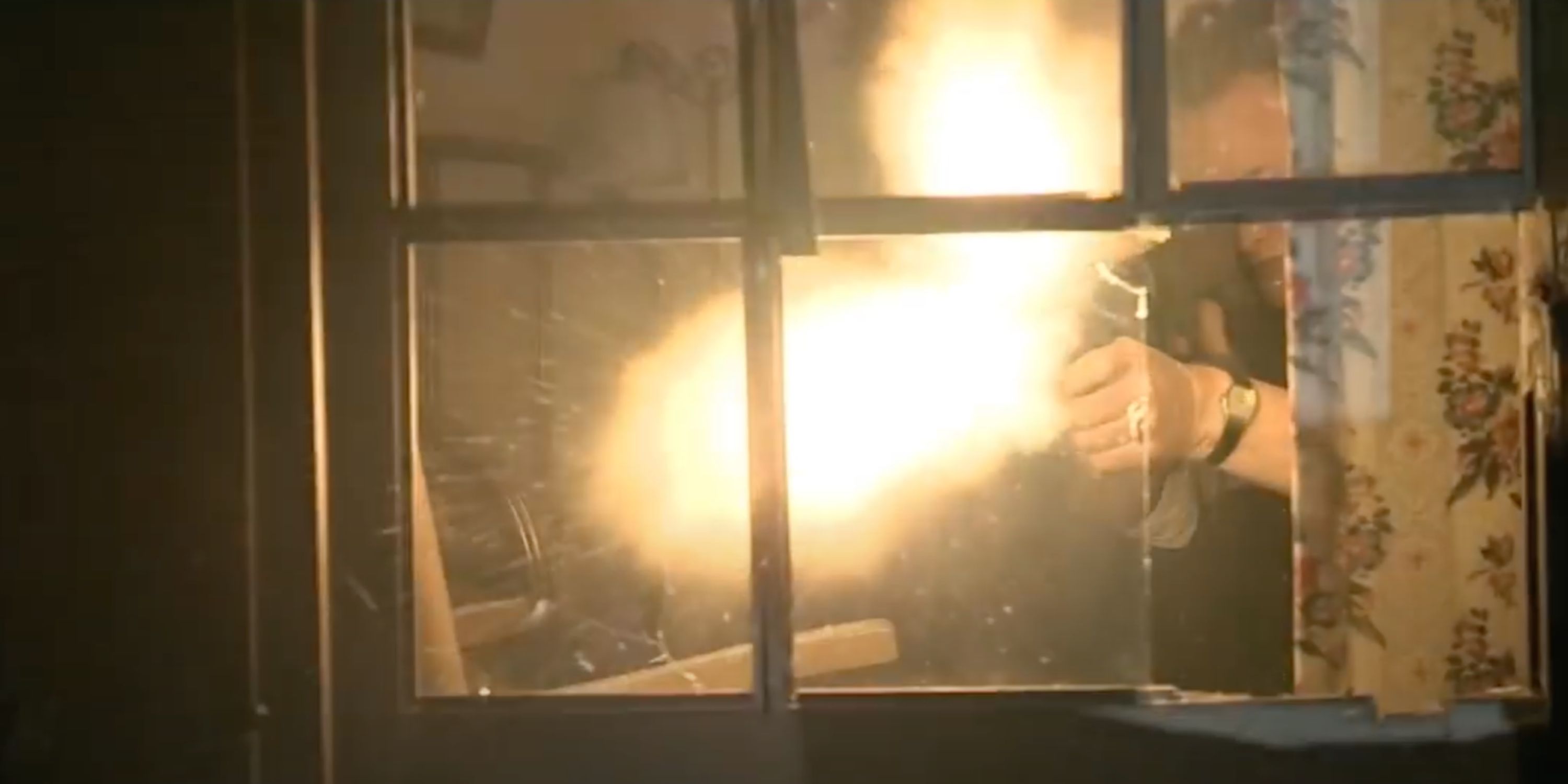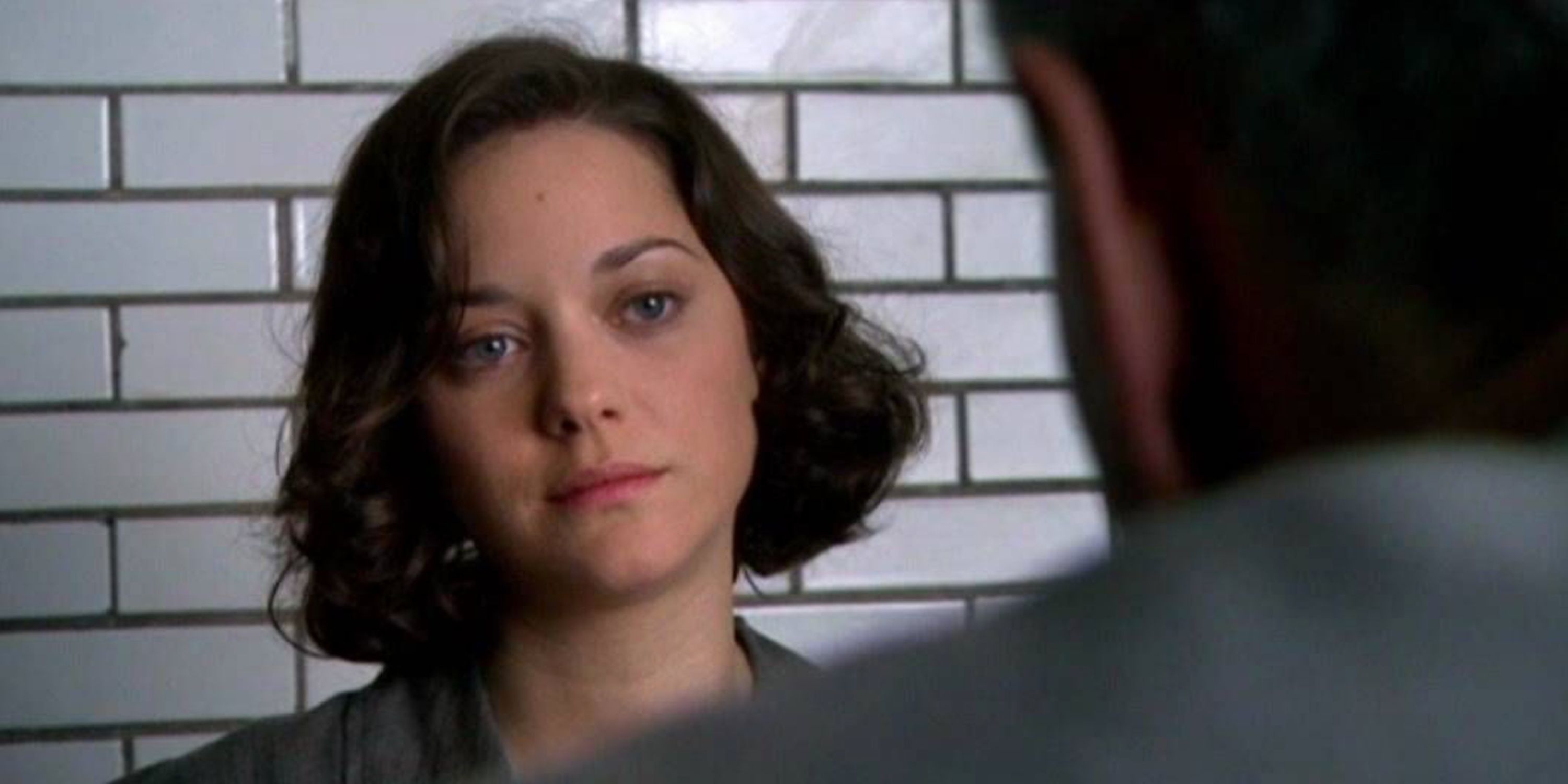2009's Public Enemies, starring Johnny Depp as John Dillinger, stays mostly true to historical events but makes a few tweaks for dramatic purposes. Writer-director Michael Mann (Heat) recreated transformative moments in the life of John Dillinger, and even filmed at the actual locations where the infamous American bankrobber squared off against FBI agents. For the primary storyline, Mann and fellow co-screenwriters Ronan Bennett and Ann Biderman adapted Bryan Burrough's 2004 book Public Enemies: America's Greatest Crime Wave and the Birth of the FBI, 1933–34. Overall, Public Enemies is mostly authentic, yet viewers shouldn't believe everything they see.
Public Enemies begins in 1933 as Dillinger (Johnny Depp) smuggles weapons into Indiana State Prison and helps his pals escape; an event that has been verified by historians. Dillinger later meets Mary Evelyn "Billie" Frechette (Marion Cotillard), a singer drawn to the focal criminal. From there, Public Enemies chronicles the major events in Dillinger's life, including his escape from Lake County Jail (Crown Point, Indiana), his escape from FBI agents during a raid at Little Bohemia Lodge (Manitowish Waters, Wisconsin), and ultimately his death outside Chicago's Biograph Theater on July 22, 1934. Public Enemies co-stars Christian Bale as Melvin Purvis, a real-life FBI agent who was notorious for tracking down high-profile gangsters, which reportedly made his colleague J. Edgar Hoover demote him for receiving too much media attention.
Produced for $100 million, Public Enemies earned over $214 million at the box office, and arguably remains one of Mann's most undervalued films. The work of cinematographer Dante Spinotti has been praised over the years, along with the collective performances. Believe it or not, Mann actually had to de-dramatize a pivotal moment in Dillinger's life, worried that audiences would question its authenticity. As a whole, the director and company don't necessarily fabricate events, but they do occasionally present alternative history by fusing together certain facts. Here's what's changed in Public Enemies on Netflix.
The Pretty Boy Floyd Timeline
Ten minutes into Public Enemies, Agent Purvis calmly hunts down bankrobber Charles Arthur Floyd, aka Pretty Boy Floyd, portrayed by Channing Tatum. Otis Taylor's "Ten Million Slaves" scores the moment, as Bale's character rips off a couple missed shots before blasting his target in the chest. "Pretty Boy Floyd?" Purvis says, "You're under arrest." He kicks away the criminal's gun and then identifies himself. In response, Pretty Boy Floyd states "I believe you killed him me, so you can go rot in hell." For the film, the Pretty Boy Floyd takedown introduces Bale's character and establishes his relevance. In reality, though, Purvis apparently didn't personally kill Pretty Boy Floyd.
Public Enemies acknowledges the prestige that Purvis gained from allegedly killing Pretty Boy Floyd, but doesn't cite the fact that there are wildly different accounts of the criminal's death. Police records show that various local officers fired at Pretty Boy Floyd, this coming after he'd been spotted in East Liverpool, Ohio. The FBI account states that Purvis led the chase with four agents and four local cops, and that it was the FBI crew who killed the target. In 1979, East Liverpool officer Charles Smith told TIME that "I knew Purvis couldn't hit him, so I dropped him with two shots from my .32 Winchester rifle." Purvis then reportedly ordered fellow agent Herman Hollis to shoot Pretty Boyd Floyd, who was then the #1 most-wanted criminal. In Public Enemies' timeline, Pretty Boy Floyd dies before Dillinger. In real life, he was killed exactly three months after Dillinger's death. The takeaway: Mann's film positions Purvis as an FBI legend. While that may be true, there's been speculation that Pretty Boy Floyd was captured and killed rather unceremoniously.
Public Enemies Toned Down John Dillinger's Indiana Escape
At the end of Public Enemies' first hour, Dillinger gets arrested in Tuscon, Arizona and transferred to Indiana. It's a true media spectacle, if only because of the criminal's outlaw status. Dillinger is questioned by Indiana journalists (portrayed by real-life Indiana reporters) about smuggling guns, and an extended legal sequence underlines the fact that Dillinger was in danger of being killed before his trial began. Astonishingly, Dillinger used a fake wooden gun to scare guards into helping him escape. In Public Enemies, the moment spotlights Depp's charisma as an actor, and may even leave viewers wondering if the entire sequence is historically accurate. It turns out that Dillinger's real-life escape was even more brazen.
Public Enemies shows Dillinger manipulating guards one by one (and with some help). He even gains access to a safe full of weapons, at which point the guards realize that he didn't have a real gun to begin with. Dillinger then escapes in the sherrif's personal vehicle, and sings "The Last Round-Up" to his hostages. When discussing the escape sequence and the question of glamorizing Dillinger's actions, Mann told Indie London that "He [Dillinger] didn’t take six or seven people hostage, he took 17 guards hostage with that wooden gun he had carved. It wouldn’t be credible if you put it in a movie, so we had to tone it down."
Dillinger And Purvis' Interactions
Prior to Dillinger's Indiana escape in Public Enemies he receives a cell visit from none other than Purvis - "the man who killed Pretty Boy Floyd." For dramatic purposes, Depp chews away on gum and stares down Bale's character, hoping to intimidate the FBI agent. For audiences, the moment reinforces the character dynamics and teases the final act showdown. In reality, however, Dillinger and Purvis never met. In fact, they reportedly never even spoke to each other. When the FBI did finally track down Dillinger and kill him, Purvis was in the vicinity but didn't interact with his target. The big Public Enemies jailhouse showdown functions as a way to build suspense, and also to reinforce Purvis as a legendary lawman.
The Wisconsin FBI Raid
Public Enemies' second act concludes with a violent showdown between Dillinger's crew and the FBI. While there's historical accuracy in the fact that Michael Mann filmed at the actual Little Bohemia Lodge - where the gunfight took place in April 1934 - the film's storyline betrays what actually happened. Specifically, Public Enemies implies that Dillinger associates Baby Face Nelson and Homer Van Meter were killed, when it fact the entire group escaped unharmed.
In reality, Baby Face Nelson did indeed kill an FBI agent at the Little Bohemia Lodge, but the Dillinger group reportedly left "immediately" and "quietly." Van Meter was later killed in St. Paul, Minnesota in August 1934, while Nelson was killed in November 1934. Red Hamilton was present at the Little Bohemia showdown, but was shot by police the following day in Minnesota. He died three days later in Illinois. Crucially, both Van Mater and Nelson were killed after Dillinger's death. In Public Enemies' version of events, the chaos establishes Dillinger as the lone survivor; someone who has lost all of his closest allies, and thus becomes a more vulnerable baddie. In actuality, the FBI website reveals that the Little Bohemia fiasco allowed agents to better understand how to approach criminals like Dillinger. It's also been suggested that Purvis began drinking heavily after the failed Little Bohemia raid, and that Samuel P. Cowley took over. Seven months after the Little Bohemia showdown, Cowley was killed by Nelson at "The Battle of Barrington" in Illinois. The event concluded with Nelson being killed by FBI agents.
Dillinger's Final Words
Public Enemies culminates with Dillinger being shot and presumably giving a message to FBI agent Charles Winstead. During the actual death scene, it's unclear what Dillinger mutters - however, the film ends with Billie learning that he actually said "Bye, bye, blackbird." According to real-life investigators, though, Dillinger died without saying any such thing. And even though Dillinger is often viewed as one of America's most notorious killers, the reality is that he was charged with one homicide during his lifetime.

